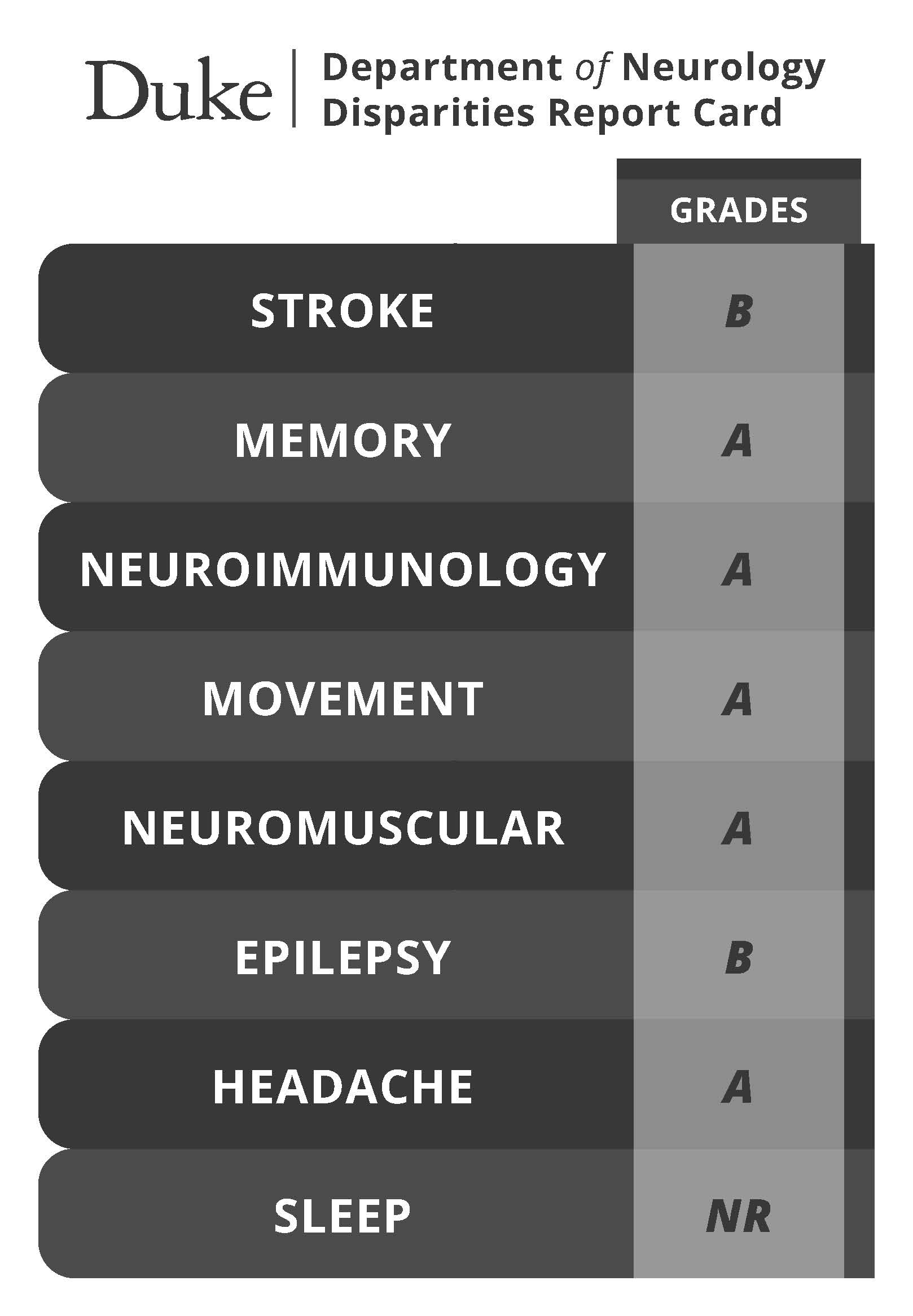
The Duke Department of Neurology recognizes that a community where people of all backgrounds are respected and included – including its clinicians, researchers, trainees, leadership, and staff – is a necessary part of its mission of world-class patient care, education, and research.
Our efforts to maintain an environment where all members of the department can thrive are built on self-assessment, accountability, and transparency.We use self-assessment to understand the people of our department, gauge our successes and areas for improvement, and guide future efforts. We perform a department census every 4 years along with a cultural satisfaction survey. In addition, we monitor pay equity, grand rounds speaker invitations, and health disparities. Department members can review this information on the intranet.
Our health disparities scorecard is available to the public to demonstrate transparency with the outcomes that affect them:
